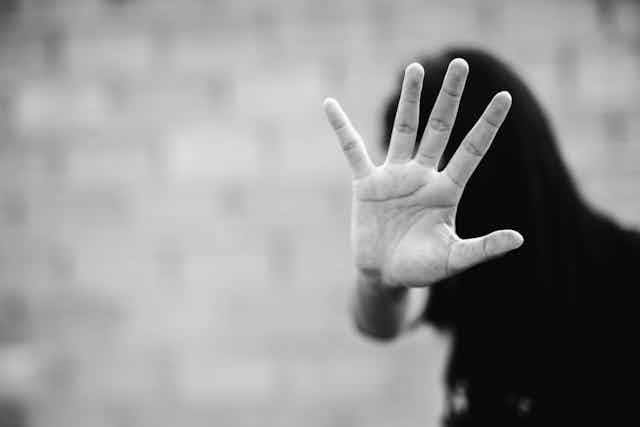The recent indictment of Jeffrey Epstein for sex trafficking highlights the importance of understanding sex offenses perpetrated by women.
Epstein allegedly did not act alone. In a variety of court filings, some of his female associates, most notably Ghislaine Maxwell, have been depicted as instrumental in his sexual encounters. None of them has been criminally charged.
We have studied women who have been convicted of sexual assault, abuse and human trafficking, as well as public attitudes toward sex offenders. Our research, and that of others, shows the similarities and differences between male and female sexual offenders.
Are many sex offenders women?
The majority of sex offenders are male. Research suggests that between 1% and 9% of those who offend sexually worldwide are women, depending on the source of data. Most estimates settle on 5%.
In surveys of people who have been victims of sexual abuse or assault, 3% of female victims and 21% of male victims report that the perpetrator was female.
However, official data of arrest and conviction rates may underrepresent the number of female sex offenders, as those who have been assaulted by a woman are less likely to report the abuse. Female offenders are also less likely to be arrested and convicted. If they are convicted, they receive shorter sentences than male offenders.
Women who commit sexual offenses differ from men in many ways. Female offenders are more likely to offend in child care contexts, including being a babysitter or teacher. Women are more likely than men to be the parent or guardian of the victim.
The victims of female offenders are often younger than those of male offenders, and female offenders are equally likely to offend against female and male victims. In contrast, male offenders overwhelmingly offend against female victims, and more often in marriage or dating relationships.
However, the most striking difference is that female offenders are six times more likely than male offenders to have a co-offender.
What is co-offending?
When two or more people participate in the abuse of the same victim, they are co-offenders.
Women may be involved by recruiting and coaxing the victims into dangerous situations and helping to provide a sense of safety for the victims. They may coerce or manipulate the victim, or perpetrate sexually abusive behaviors in front of, or at the same time as, the male abuser.
Accusers in the Epstein cases allege that his female co-offenders engaged in all of these forms of abuse.
Women co-offend for many reasons. Some may abuse victims for reasons similar to male offenders – for example, to gain power, to retaliate against someone, or due to sexual deviance.
However, many are coerced or forced by the male co-offender. Many are threatened or physically abused to force participation. Others participate in exchange for money or drugs.
Women who co-offend are different from those who offend alone in many ways. More have traumatic childhoods and strained relationships with parents due to parents being divorced, in prison or abusing drugs or alcohol. They are also more likely to be in a violent relationship with a husband or boyfriend, who is often the co-offender.
Women who are coerced to participate in sexual abuse are also more likely than women who are not coerced to have experienced physical, emotional or sexual abuse in childhood, as well as adult relationships that involved intimidation, stalking or sexual abuse.
What should be done?
In testimony and interviews, alleged victims of Epstein report that the presence of the women prior to and during the assaults made them feel that they were safe. They questioned their feelings that what was happening was actually rape or sexual assault. They report ignoring red flags because, if another woman was there who acted as if the situation was normal, they must be wrong in feeling violated. They also reported threats against them if they did not comply.
One accuser described a situation in which she was allegedly assaulted with Maxwell nearby, stating, “I felt like she was aware of it. So again, there was this safety in that the door was open. And so I felt like she could have easily been aware of what he was doing and [was] fine with it.”
None of Epstein’s female associates has been indicted.
Media accounts of female offenders, particularly teachers who abuse male students, minimize the effect on the victims and eroticize the offenders. Cases of adult women having sexual relationships with underage boys are commonly described as “illicit romances,” with no discussion of the potential of coercion, misuse of power or long-term harm.
In our experience, many sexual violence prevention programs, materials and public service announcements depict perpetrators as being universally male. This may make it difficult for potential victims to identify a woman’s behavior as coercive, manipulative or abusive.
We believe that introducing prevention programs that specifically address women as potential perpetrators may be effective in helping to prevent some abuses, such as those alleged in the Epstein cases.

